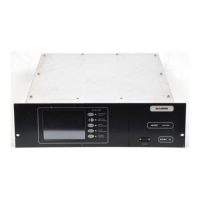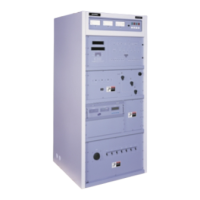888-2406-002 4-3
WARNING: Disconnect primary power prior to servicing.
Overall System Theory
4.2.1 Exciters
It starts with the built in dual exciter option (in other words the switching
components are present but the exciter is optional). The RF output of both exciters
(if present) connect in to the Exciter/IPA Backplane board. The exciter RF switch
shown on this board is activated by the controller if Exciter A were to fail, placing
Exciter B on the air automatically. This fault and all other transmitter faults are
stored in the Fault Log in the Diagnostics Display System. The active exciter output
is selected by the first RF switch and directed to the active IPA by the second RF
switch. Both RF switches are controlled by the Master Controller.
4.2.2 IPAs
The Z2 has 1 IPA Module, which is made up of 2 power amplifiers or PAs. The IPA
Module is not interchangeable with the PA Modules since the PA modules for the
Z2 only have one amplifier on one side of the heatsink. The 2 IPAs per IPA Module
operate in Main/Alternate mode, meaning that only one of them is active at a time.
The block diagram shows that IPA_1 is the normally active amplifier. RF switching
on the input and output of the IPA is activated by the controller if a fault is sensed in
the active IPA. The IPA output passes through a hybrid with a shorting cable
connected across the output terminals. The hybrid reject load output then becomes
the IPA output to the PA.
4.2.3 Power Amplifier
The Z2 contains only one Z-Plane (called Z-Plane B) which could be considered a
2.5kW Power Block. The Z-Plane can be broken down into 2 parts, a Divider Board
and a Combiner Board.
4.2.3.1 Z-Plane Divider Board
The Divider Board takes the IPA input and uses a 2 way wilkinson splitter to drive
two more 4 way Wilkinson splitters. This provides the necessary 8 drive signal for
the 8 PAs connected to the Z-Plane. The PAs are labeled 1-8. PAs 1-4 are located in
the front of the transmitter, while 5-8 are located in the rear of the transmitter. PAs
1-4 are considered a FOURSOME, because they are connected to the same 4 Way
combiner. PAs 5-8 are also considered a Foursome. (See Figure 4-4 and Figure 4-5)
